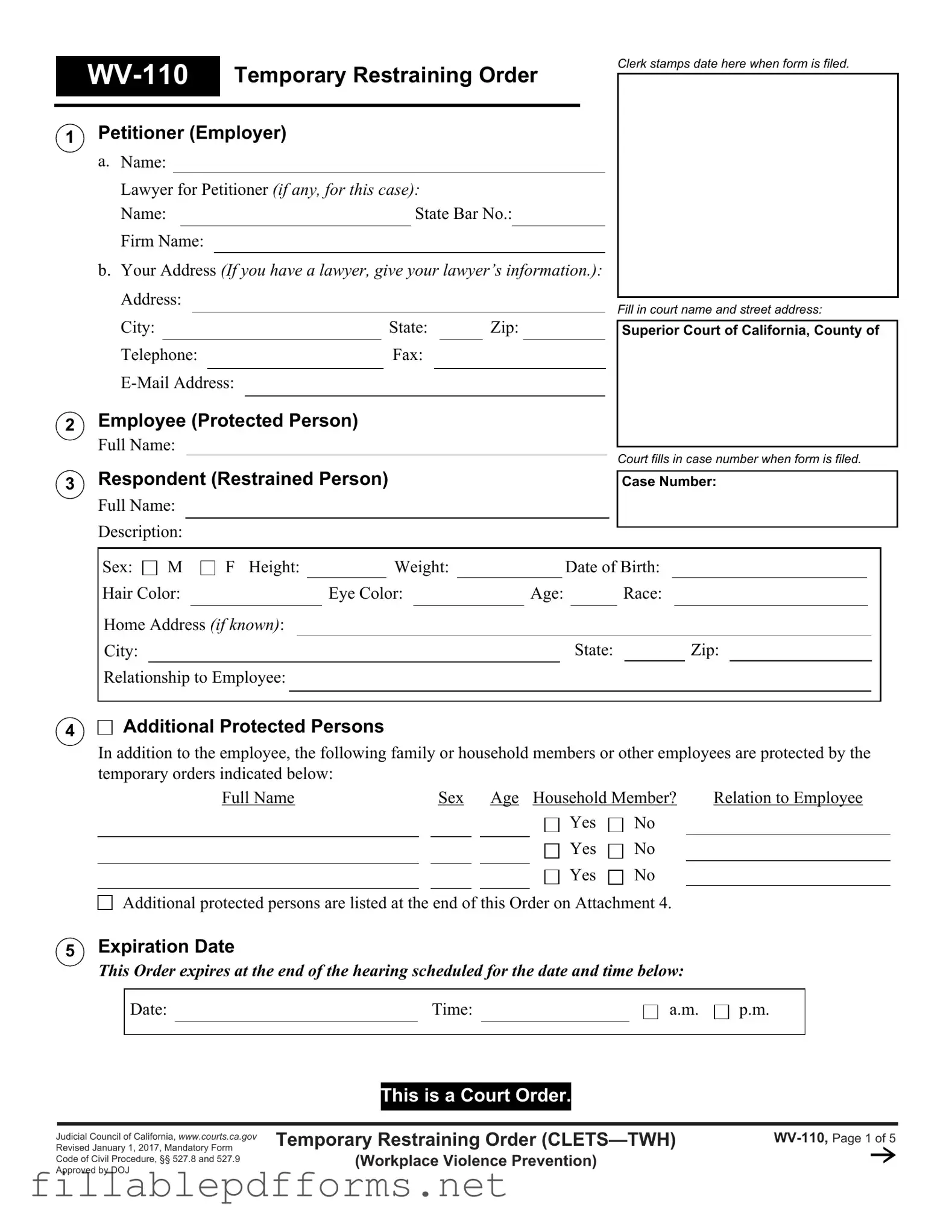The Fake Restraining Order form, officially known as the WV-110 Temporary Restraining Order, serves a crucial role in protecting individuals from potential threats or acts of violence in the workplace. This form is designed for use in California and outlines the necessary information regarding both the petitioner, typically the employer, and the respondent, the individual being restrained. Essential details include names, addresses, and personal characteristics such as sex, height, weight, and age. The form also allows for the identification of additional protected persons, such as family members or other employees who may also require protection. Importantly, it specifies the conditions of the restraining order, which may include prohibitions against harassment, stalking, and any form of direct or indirect contact. Furthermore, the form mandates that the respondent must stay a specified distance away from the protected individual and their workplace, home, and other designated locations. It also includes provisions regarding firearms, stating that the restrained person must surrender any firearms they possess. The WV-110 form not only establishes clear guidelines for behavior but also outlines the consequences of violating the order, which can include arrest and criminal charges. This comprehensive approach aims to ensure the safety of individuals in potentially volatile situations, reflecting the serious nature of workplace violence prevention efforts.
